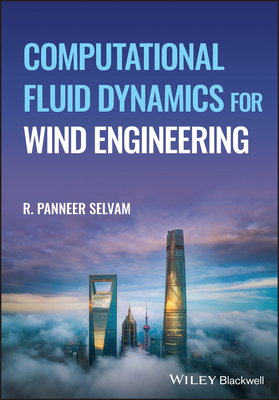Applied Computational Fluid Dynamics and Turbulence Modeling: Practical Tools, Tips and Techniques
Rodriguez, Sal
- 出版商: Springer
- 出版日期: 2019-12-18
- 售價: $4,850
- 貴賓價: 9.5 折 $4,608
- 語言: 英文
- 頁數: 306
- 裝訂: Hardcover - also called cloth, retail trade, or trade
- ISBN: 3030286908
- ISBN-13: 9783030286903
-
相關分類:
流體力學 Fluid-mechanics
海外代購書籍(需單獨結帳)
相關主題
商品描述
This unique text provides engineering students and practicing professionals with a comprehensive set of practical, hands-on guidelines and dozens of step-by-step examples for performing state-of-the-art, reliable computational fluid dynamics (CFD) and turbulence modeling. Key CFD and turbulence programs are included as well. The text first reviews basic CFD theory, and then details advanced applied theories for estimating turbulence, including new algorithms created by the author. The book gives practical advice on selecting appropriate turbulence models and presents best CFD practices for modeling and generating reliable simulations. The author gathered and developed the book's hundreds of tips, tricks, and examples over three decades of research and development at three national laboratories and at the University of New Mexico--many in print for the first time in this book. The book also places a strong emphasis on recent CFD and turbulence advancements found in the literature over the past five to 10 years. Readers can apply the author's advice and insights whether using commercial or national laboratory software such as ANSYS Fluent, STAR-CCM, COMSOL, Flownex, SimScale, OpenFOAM, Fuego, KIVA, BIGHORN, or their own computational tools.
Applied Computational Fluid Dynamics and Turbulence Modeling is a practical, complementary companion for academic CFD textbooks and senior project courses in mechanical, civil, chemical, and nuclear engineering; senior undergraduate and graduate CFD and turbulence modeling courses; and for professionals developing commercial and research applications.
作者簡介
His recent research advances include the development of the right-sized dimpling algorithm for reduced flow drag and increased heat transfer, development of the first dynamic code for modeling hydrogen production in integral nuclear reactor systems, aerodynamic drag reduction for race cars, an isotropic turbulence decay model, and the development of a vortex-unification theory. Other research interests include advanced manufacturing of drag-reducing surfaces with enhanced heat transfer, as well as the development and laser-engineered manufacturing of high entropy refractory alloys (RHEAs) for nuclear reactor and aerodynamic applications.












